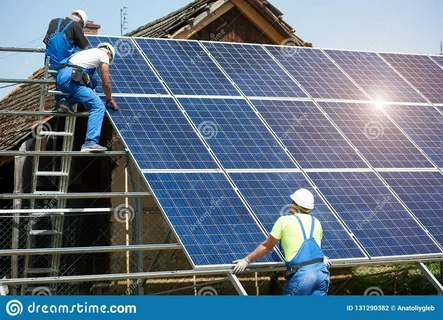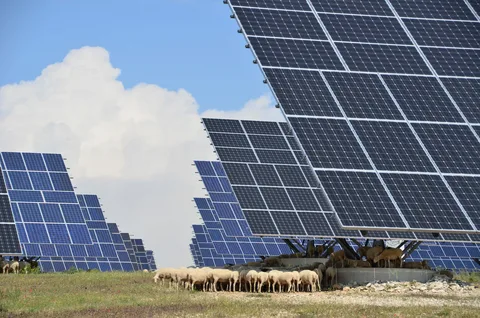Australia, the sun-drenched continent, is showing an increasing inclination towards using stand-alone solar power systems, and for good reasons. This shift towards solar energy is not just a fad, but a necessity for the region considering the economic, environmental, and energy security advantages it offers. Stand Alone Solar Power Systems Australia continues to shape a future where sustainable and reliable energy solutions take precedence. Despite the initial setup cost, these systems offer tremendous benefits for consumers and the environment alike.
Understanding a Stand Alone Solar Systems QLD
Stand Alone Solar Systems QLD, are also known as an off-grid system, and operates independently from the traditional electricity grid. This system typically consists of solar panels, a battery bank, an inverter, and a charge controller. In Queensland, where solar exposure is high, these systems harness the abundant sunshine, converting it into electricity for immediate use or storing it in batteries for later use.
The inverter plays a critical role in converting the direct current (DC) produced by the solar panels into alternating current (AC), which is used to power most household appliances. The charge controller, on the other hand, safeguards the system by managing the power that goes into the battery, preventing overcharging and enhancing battery life.
The essence of a stand-alone solar system lies in its ability to provide continuous power supply even when grid power is unavailable or unreliable, making it a particularly beneficial option for rural and remote areas of Queensland. Additionally, the capacity to store excess power in batteries enables usage during the night or cloudy days, ensuring a round-the-clock electricity supply.
The Promising Solar Potential of Australia
Australia’s geography and climate make it an ideal hub for harnessing solar energy. Located within the “Sunbelt” of the globe, Australia boasts some of the highest solar radiation levels per square meter. This equates to a solar potential that far exceeds the nation’s current energy consumption. Some regions, such as Queensland and New South Wales, bask in over 2,500 hours of sunshine annually, providing an abundant source of solar energy waiting to be tapped.
While the number of solar installations across the country is rapidly increasing, the level of solar power utilization is still relatively low compared to the potential. According to data from the Australian Bureau of Statistics, only about 20% of Australian homes had a solar power system installed as of 2018.
Yet, given the country’s abundant sunshine and recent advancements in solar technology, Australia has the opportunity to significantly increase this percentage. A recent study by the Australian Energy Market Operator (AEMO) suggests that Australia could feasibly generate up to 75% of its electricity from wind and solar power by 2025. This untapped solar potential presents a significant opportunity not only for households looking to save on their energy bills but also for the nation as a whole.
Economic Benefits of Stand Alone Power Systems Australia
The financial gains from adopting Stand Alone power systems Australia are noteworthy. There’s an undeniable cost associated with the initial setup of these systems, yet the return on this investment is substantial when considering the long-term savings on utility bills. In many instances, households can potentially reduce their electricity bills to nothing.
The Australian government further encourages the transition to solar by offering a variety of incentives and rebates, reducing the financial burden associated with installing these systems. As such, the overall expense of implementing stand-alone solar power systems has become more accessible and economically advantageous in the long run.
This has resulted in a significant increase in the uptake of these systems across Australia, with more and more households recognising the value in self-sufficiency and sustainable living. Interestingly, this trend is not only observed in urban areas but also in rural and remote regions, highlighting the wide-scale acceptance and adoption of stand-alone solar power systems across the country.
Environmental Advantages of Shifting to Solar
The transition to stand-alone solar power systems is not only financially rewarding but also yields significant environmental benefits. Solar power is a clean and renewable source of energy, producing no greenhouse gas emissions during operation, thus reducing its carbon footprint significantly. Unlike conventional power sources that rely on burning fossil fuels, solar energy harnesses the abundant power of the sun, a resource that’s both limitless and free of charge.
The adoption of solar energy is therefore instrumental in mitigating climate change by reducing the reliance on fossil fuels, and consequently, lowering greenhouse gas emissions. Additionally, solar power systems consume significantly less water compared to traditional energy sources. Nuclear and coal-fired power plants, for instance, require vast amounts of water for cooling purposes. In contrast, solar photovoltaic systems require virtually no water to generate electricity, making solar power a more sustainable option in water-scarce regions.
Stand Alone Solar Power Systems Queensland Promote Energy Security
Energy security is a crucial aspect of any robust power system, and this is precisely what stand-alone solar power systems offer to the residents of Queensland. When conventional power grids fail or suffer from disruptions due to natural disasters, maintenance, or other issues, homes with off-grid solar systems can continue to operate without interruption The Stand Alone Solar Power Systems Queensland are capable of generating and storing their own electricity, reducing dependence on the traditional electricity grid.
It is particularly vital in a region like Queensland, where cyclones and extreme weather events can often lead to prolonged power outages. This independence from the grid serves as a safety net, ensuring a constant power supply even in emergency situations. It also eliminates the potential vulnerabilities associated with relying solely on a central power source, such as infrastructure failures or fluctuations in energy prices.
Moreover, stand-alone solar systems can play a pivotal role in remote or rural communities in Queensland, where extending grid infrastructure may not be cost-effective or feasible. For these communities, the introduction of solar energy systems can be transformative, providing reliable and affordable power for the very first time.
The Convenience of Remote Monitoring and Control
Modern stand-alone solar power systems come equipped with advanced features like remote monitoring and control, which adds a layer of convenience for users. This feature allows homeowners to monitor and manage their solar energy system remotely via a smartphone app or a web-based platform. Users can view real-time data on their solar power production and energy consumption, and get valuable insights into the system’s performance.
It empowers them to make informed decisions, such as when to use appliances to maximize the use of solar energy, and when to rely on stored energy. As a result, users can effectively manage their power consumption and save on electricity costs. Remote monitoring also alerts users to potential issues with their solar power system, ensuring prompt corrective action and minimal disruptions. Notifications about maintenance requirements, battery status, or any potential system faults can be received instantly, no matter where the user is.
It leads to timely maintenance, increased system efficiency, and longevity. In addition to all these benefits, the ability to control the solar power system remotely means users can adjust system settings from the comfort of their own home, or even when they are away. They can switch between power sources, control battery charging and discharging, and even manage power loads, all at their fingertips.
Stand Alone Solar Power Systems NSW
New South Wales (NSW), with its abundant sunshine and progressive renewable energy policies, presents a promising landscape for the adoption of Stand Alone solar power systems NSW boasts one of the highest rates of solar installation in Australia, a testament to the state’s commitment to clean energy. Stand Alone Power systems NSW offer a sustainable solution to the rising energy prices and grid reliability issues faced by many residents.
In regions like the remote outback of NSW, where grid access is often unreliable or non-existent, stand-alone solar systems provide a practical alternative, ensuring a consistent power supply. The independence from the grid also benefits those living in bushfire-prone areas, where power lines might be compromised during fire seasons.
The NSW Government’s proactive approach towards renewable energy is evident in the solar incentives they offer. Initiatives like the Empowering Homes Program provide interest-free loans to homeowners and landlords for the installation of solar battery systems. These incentives significantly offset the initial setup costs, making stand-alone solar power a financially attractive option for many.
 Rising Demand for Off-Grid Solar Power Solutions
Rising Demand for Off-Grid Solar Power Solutions
The shift towards off-grid solar power solutions in Australia is increasingly gaining traction. The catalysts behind this rise in demand are manifold. With escalating electricity prices, homeowners are recognizing the financial advantage of these stand-alone systems that can potentially slash energy bills to zero. This prospect of long-term cost-saving is a compelling motivation for many.
Moreover, the environmental consciousness among Australians is accelerating the demand for cleaner energy sources like solar power. There is an increasing desire to minimize carbon footprints and contribute to environmental preservation, a goal readily achieved through solar energy. Stand-alone systems align perfectly with this sustainability ethos, driving their popularity among the eco-conscious.
Further, for those living in remote or rural areas, stand-alone solar systems offer an ideal solution to the challenges of unreliable grid access. The promise of consistent, independent power supply is appealing to those in regions where electricity supply can be sporadic. Lastly, the technological advancement of remote monitoring and control capabilities has made solar power a more attractive proposition. The convenience of managing and optimizing their solar systems from any location has endeared many Australians to this renewable energy alternative.
FAQS
How Much Can I Save By Installing A Stand-Alone Solar Power System?
While the exact savings will depend on various factors such as your location and the size of the system, many Australian households can potentially reduce their electricity bills to nothing with a stand-alone solar power system.
Can I Get Government Incentives For Installing A Stand-Alone Solar Power System?
Yes, the Australian government provides various incentives and rebates for those who install solar power systems. Contact your local authorities or a solar provider like Northern Solar Services for specific details.
Can A Stand-Alone Solar Power System Supply Electricity During A Blackout?
Absolutely! Since stand-alone solar systems operate independently of the grid, they can continue to supply power during blackouts, provided there is sufficient energy stored in the system’s batteries.
Conclusion
The escalating use of Stand Alone solar power systems Australia isn’t just a trend, but an essential progression in response to the critical issues of rising energy costs, ecological preservation, and energy stability. This sustainable shift offers a host of advantages from financial savings on utility bills to fostering a cleaner and healthier environment. Australia’s path towards solar energy extends beyond merely capturing sunlight. It represents a strategic step towards shaping a more sustainable, secure, and self-reliant energy future.
| Other Good Articles to Read |
| Skank Blogs |
| Unreal Blogs |
| Tba Blogs |
| All City Forums |
| Dany Blogs |
| Refuge Blogs |
| The Music Blogs |
| Key Forums |
| The Big Blog Theory |
| Joe Blogs |
| Blogs 4 Me |
| Blogs Emon |
| Related Business Listings |
| Contact Directory |
| Local Business Profiles |



